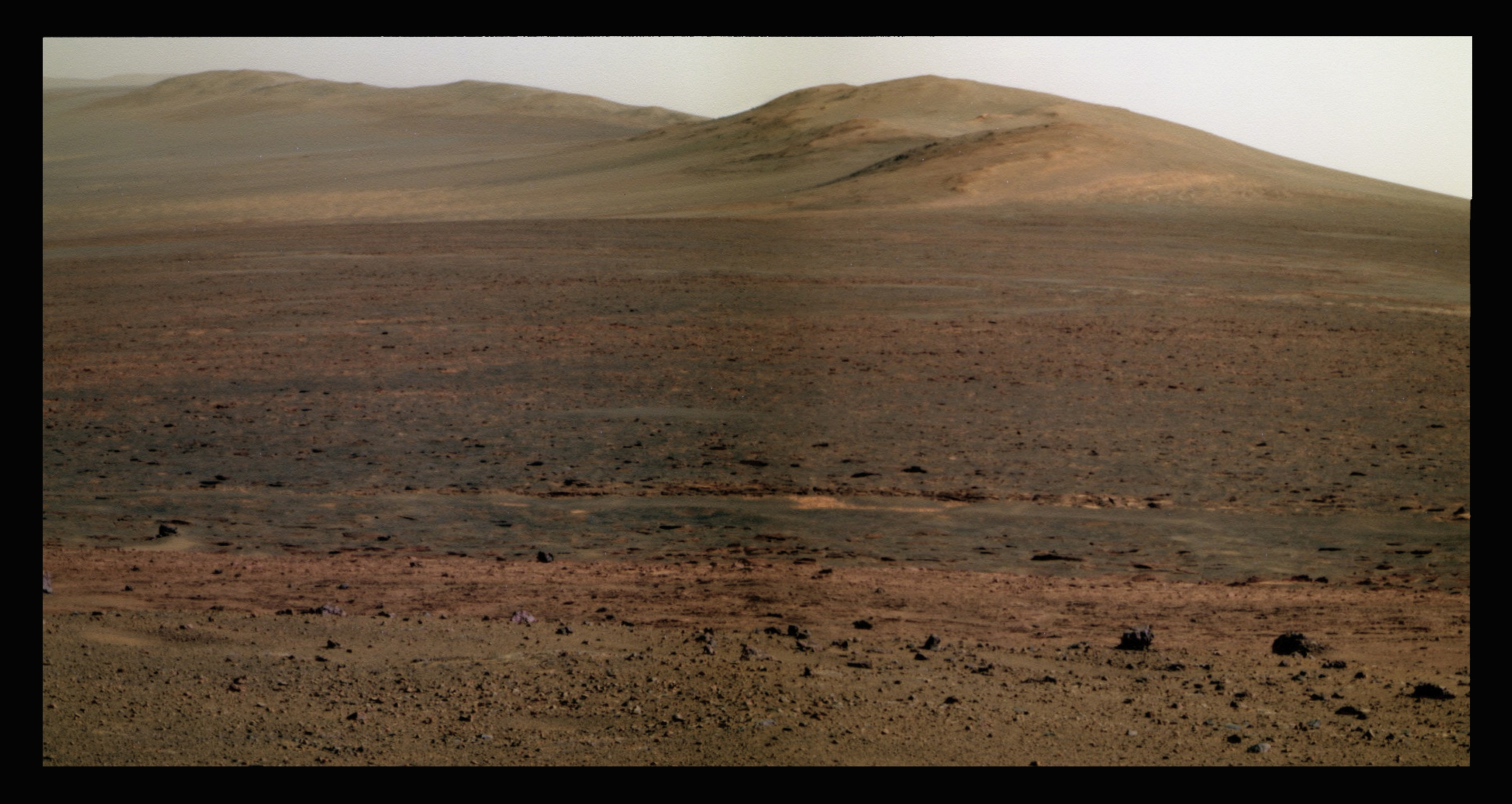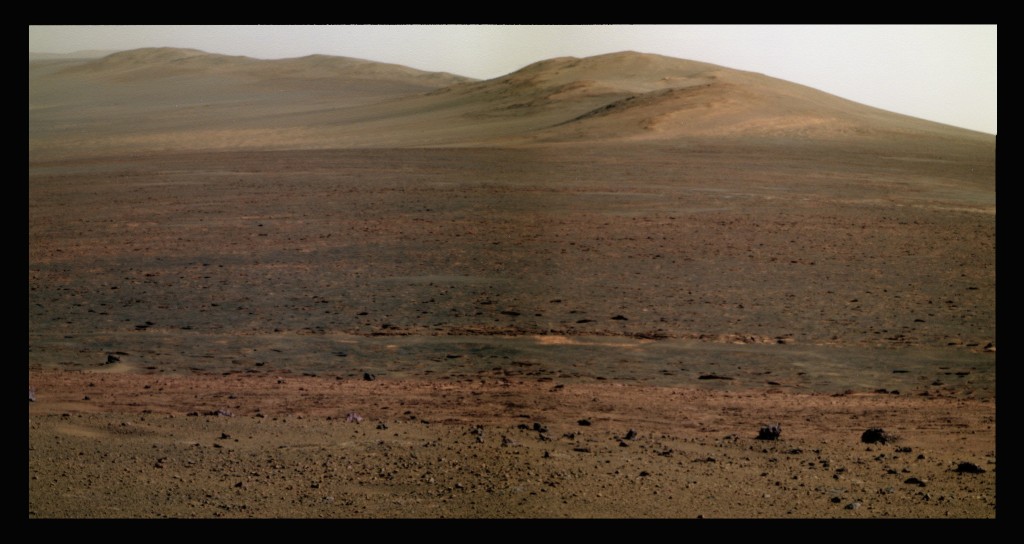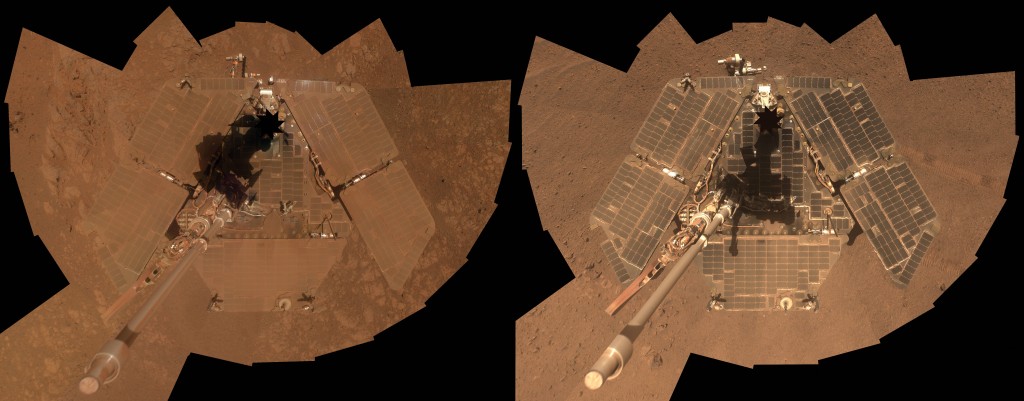April 18, 2014 – Opportunity, the little Martian rover, continues to click after a decade on the planet’s surface. It is a remarkable story that the technology continues to function providing new discoveries for scientists here on Earth. Opportunity’s original mission along with its companion, Spirit, was for 90 days.
Over the winter the rover rested in one spot trying to maximize the charge in its lithium-ion batteries. It chose its stop well because the Martian winds dusted off the solar panels that power it up. Prior to parking for the winter Opportunity’s solar panels were down to 60% efficiency. But the wind cleared the dust and now the rover is cleaner than it has been since 2005 and is converting solar energy with better than 70% efficiency. That’s generating 615 watt hours. The rover needs only 100 watt hours to operate so the lithium-ion batteries should be kept fully charged with all this extra energy to spare.
Now the rover is on a new mission to climb a nearby ridge of hills that have been named Murray Ridge. One particular area along the ridge, called Cape Tribulation (seen in the postcard image below) is of particular interest because of its unusual rock formations. The Opportunity Jet Propulsion Laboratory team on Earth believes these rocks bear the signs of a prior Martian wet period. Opportunity has already made discoveries that suggest Mars in the past experienced periods that may have been life-friendly. The trek to Cape Tribulation is expected to take two years.
From time to time Opportunity takes a selfie using its panoramic camera. It took one back in January when the rover’s solar panels were covered in dust. That’s the picture seen below on the left. The latest picture from April on the right shows how the winds of Mars have brought a new shine to the rover’s solar array and given it some additional oomph.














